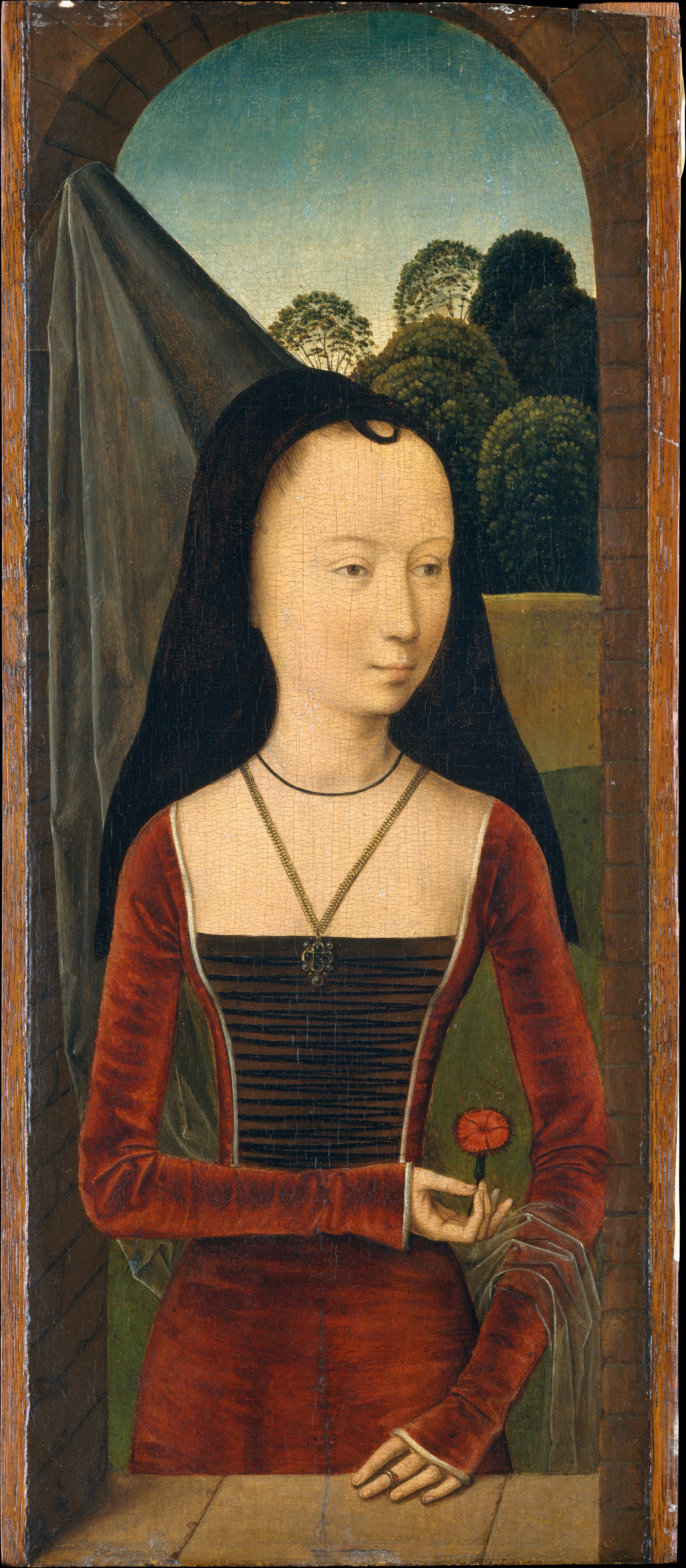|
Cointoise
A cointoise is a pendant scarf made from a hat or helmet. Originally, the cloth was worn by Crusaders to keep their helmets cool in the heat of Palestine. Later, it was used a decoration in jousting; the same term being applied later to the veil worn by women which floated from the top of their hennin The hennin ( ; possibly from Flemish meaning cock or rooster) was a headdress in the shape of a pointed hat, cone, steeple, or truncated cone worn in the Late Middle Ages by European women of the nobility. They were most common in Duchy of Burgu ...s. It is the original of the heraldic "mantle" or wavy scrolls around a coat of arms. References Headgear {{clothing-stub ... [...More Info...] [...Related Items...] OR: [Wikipedia] [Google] [Baidu] |
Hennin
The hennin ( ; possibly from Flemish meaning cock or rooster) was a headdress in the shape of a pointed hat, cone, steeple, or truncated cone worn in the Late Middle Ages by European women of the nobility. They were most common in Duchy of Burgundy, Burgundy and France in the Middle Ages, France, but also elsewhere, especially at the English courts, and in Northern Europe, Hungary and Poland. They were little seen in Italy. It is unclear what styles the word ''hennin'' described at the time, though it is recorded as being used in French areas in 1428, probably before the conical style appeared. The word does not appear in English until the 19th century. The term is therefore used by some writers on costume for other female head-dresses of the period. In Popular culture, pop culture, the hennin is often used to identify princesses and other important women in a royal court. Conical hennins These appear from about 1430 onwards, especially after the mid-century, initially only ... [...More Info...] [...Related Items...] OR: [Wikipedia] [Google] [Baidu] |
Crusades
The Crusades were a series of religious wars initiated, supported, and at times directed by the Papacy during the Middle Ages. The most prominent of these were the campaigns to the Holy Land aimed at reclaiming Jerusalem and its surrounding territories from Muslim rule. Beginning with the First Crusade, which culminated in the Siege of Jerusalem (1099), capture of Jerusalem in 1099, these expeditions spanned centuries and became a central aspect of European political, religious, and military history. In 1095, after a Byzantine request for aid,Helen J. Nicholson, ''The Crusades'', (Greenwood Publishing, 2004), 6. Pope Urban II proclaimed the first expedition at the Council of Clermont. He encouraged military support for List of Byzantine emperors, Byzantine emperor Alexios I Komnenos, AlexiosI Komnenos and called for an armed pilgrimage to Jerusalem. Across all social strata in Western Europe, there was an enthusiastic response. Participants came from all over Europe and had a ... [...More Info...] [...Related Items...] OR: [Wikipedia] [Google] [Baidu] |
Palestine (region)
The region of Palestine, also known as historic Palestine, is a geographical area in West Asia. It includes the modern states of Israel and Palestine, as well as parts of northwestern Jordan in some definitions. Other names for the region include Canaan, the Promised Land, the Land of Israel, or the Holy Land. The earliest written record Timeline of the name Palestine, referring to Palestine as a geographical region is in the ''Histories (Herodotus), Histories'' of Herodotus in the 5th century BCE, which calls the area ''Palaistine'', referring to the territory previously held by Philistia, a state that existed in that area from the 12th to the 7th century BCE. The Roman Empire conquered the region and in 6 CE established the province known as Judaea (Roman province), Judaea. In the aftermath of the Bar Kokhba revolt (132–136 CE), the province was renamed Syria Palaestina. In 390, during the Byzantine period, the region was split into the provinces of Palaestina Prima, Pal ... [...More Info...] [...Related Items...] OR: [Wikipedia] [Google] [Baidu] |

